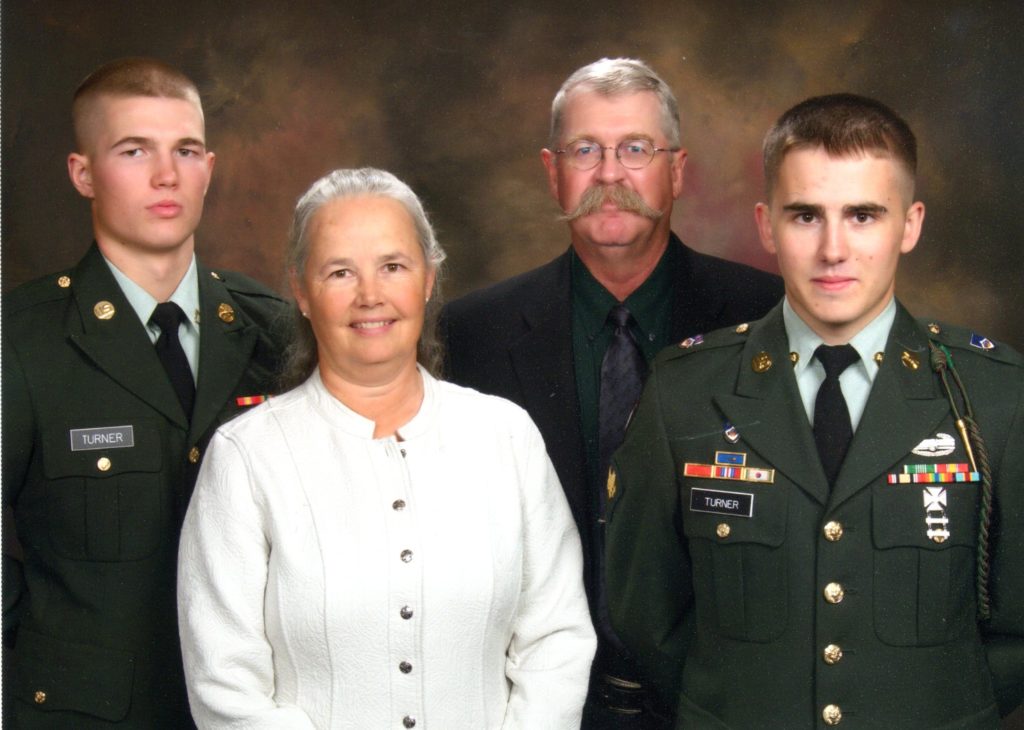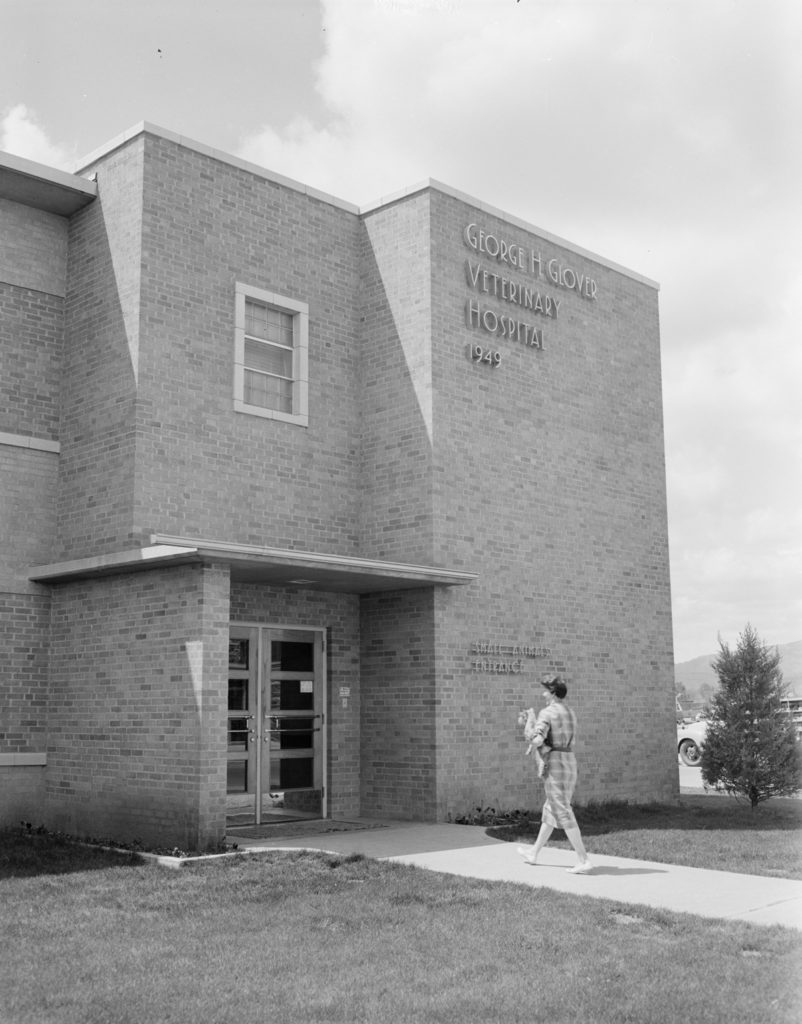Interview by Claire Tucker, College of Veterinary Medicine and Biomedical Sciences Office of Advancement
Tracy Turner, B.S., Veterinary Science, ’76; D.V.M., ’78; DACVS; DACVSMR
Founder of Turner Equine Sports Medicine and Rehabilitation

After a veterinary career in academia and private practice, Dr. Tracy Turner founded Turner Equine Sports Medicine and Surgery in 2016. He served on the faculty of the University of Illinois, University of Florida and the University of Minnesota, and joined Anoka Equine Clinic in 2004. Turner consults for the USDA Horse Protection, Federation Equestre Internationale and U.S. Equestrian Federation, and served as equine veterinarian at the Pan American Games, Olympic Games World Equestrian Games. He is board-certified in Veterinary Surgery and Equine Sports Medicine and Rehabilitation.
A lifelong interest
“I grew up on a small ranch in southwest Colorado, riding horses, learning rodeo, and wanting to be a veterinarian,” Turner says. “We had all sorts of animals on the ranch, and I knew from a very early age that I wanted to be the one to care for them. Then, as I was gaining experience for veterinary school, I worked at another ranch under the mentorship of a farrier. That cemented my interest in equine sports medicine and surgery.”
Aggie anecdotes
“My veterinary class of 1978 was the last class in the Glover veterinary hospital, right in the middle of the CSU campus, just to the North of the Forestry Building,” Turner continues. “I had a large-animal professor who promised an ‘A’ to any student who managed to run one of the bulls at the hospital all the way through the Forestry Building. I thought about it, but there wasn’t much of a chute system behind the hospital. I didn’t think I could get the bull pointed in the right direction! Back in those days, there were 92 members of my class, 11 of whom were women.
“On clinics, we were not allowed to have facial hair, especially in the operating room when Dr. O.R. Adams, one of the surgeons, was working. I was assigned to assist with one of Dr. Adams’ equine surgeries, but had my signature mustache and was quite put off at the thought of shaving it. I decided to try and hide it under the surgical mask, hoping that my classmates wouldn’t tip off Dr. Adams to the infraction. It was about 100 degrees in the barns that day, so my mask and mustache were full of sweat for hours. During the surgery, Dr. Adams looked up from the horse and right at me, and I knew he realized who I was and what I was hiding. But I like to think he was so impressed at my commitment to the collusion that he let me slide. The things one does for facial hair!”
From intern to specialist

“After veterinary school at CSU, I took an academic internship at the University of Georgia,” he says. “I really won the intern lottery. I got to scrub in on almost every surgery and work on every lameness case. Then I applied and got a residency at Purdue University. As I arrived at Purdue, there was a young man just finishing his Ph.D. and about to take his first faculty position at CSU. His name was Wayne McIlwraith. Just shows you how well connected the veterinary world can be!
“As a resident, I felt like I finally gained true confidence as a veterinarian. I finally understood why they work you so hard in veterinary school, why the information is so vital to understand. Through hundreds of case reports, surgeries and client interactions, I discovered the kind of clinician I wanted to be for the rest of my career. My mentor, Dr. Jack Fessler, not only taught me the ways to cut in surgery, but the ways to think as a surgeon. Now, when I go into surgery, I think deeply about the anatomy, the pathophysiology of the disease, about the unique characteristics of my patient. Because I think things through, I am rarely surprised. I’ve planned for what can go wrong.
“Although my training is mostly equine, I’ve been called on to work on other animals, everything from ungulates to elephants. I remember at The University of Florida doing one of the first tusk removals on an elephant. You have to split the tusk and turn it to take it out, but we didn’t know that at the time. When you’re in those situations, you follow the book as long as you can. Then you improvise and innovate and write the book yourself.
“Now, in a sport medicine and surgery specialty practice, I get to see horses all day long. I love it. As a specialist, I usually get the trickiest issues, ones that have stumped others. It is kind of like managing athletes, from the weekend warriors to the very elite. One plan will not suit every horse, and I have to be creative and thoughtful.”
Always honing the craft
“What I am learning now is that you cannot solve everything with a needle and syringe,” Turners says. “I am learning to really value the rehabilitation and physical therapy aspects of treatment, especially when you need to get motion back in an animal. As I look forward to the next decade of my career, I want to focus on how to quantify the efficacy of rehabilitation. I want to develop objective metrics for range of motion, strength in a muscle, restoration of normal. I want to be able to prove that our treatments work in longevity.
“One of my goals since the day I graduated was to solve navicular disease. I won’t be able to solve it completely since it’s wickedly complicated. But I’d like to be able to rewrite how clinicians think about navicular disease with the goal to improve its management.”
Students are the reason why
“Over the years, I have most enjoyed interactions with students,” he continues. “There is a lot of energy found in teaching students and helping them with their careers. Every year, my wife, Dr. Julie Wilson (president of Equitarian Initiative) and I travel down to Honduras and work with Honduran veterinary students to treat the working horses of the world. Even through the communication barriers, I can still tell when a student gets it. When they are really thinking about the problems in front of them.
“As I think about veterinary students today, I am so excited for their careers ahead. They have so much at their disposal, so many tools and resources I never had. I just have a few words of advice. First, take “panic” out of your vocabulary. Think about everything carefully and with a level head. Second, never say “never” and never say “always.” Weird stuff happens all the time, and you have to keep an open mind. Finally, be guided by your passions and not by your grades. Focus on understanding first, and the grades will follow from there. Never memorize. Understanding will make you into the clinician you are meant to be.”